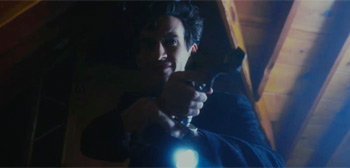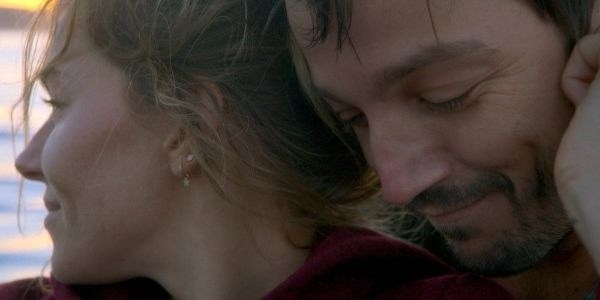‘Raiders’ at 40: Indy Hasn’t Aged a Minute
Halfway through Steven Spielberg’s “Raiders of the Lost Ark,” Indiana Jones sneaks into the mythical map room and discovers the location of the Well of Souls.
Harrison Ford’s iconic character does this by placing Abner Ravenwood’s amulet onto a staff, allowing the sun to shine a beam through the crystal in the amulet’s center. The move illuminates a ray onto the model spread out on the ground.
I used to show this part to my film classes every year.
The scene is pure cinema, with no dialog, just the giddy build of John Williams’ powerful score, the pacing of Spielberg’s precise filmmaking and the stare on Ford’s face. It’s a mask of pure obsession and faith in the impossible.
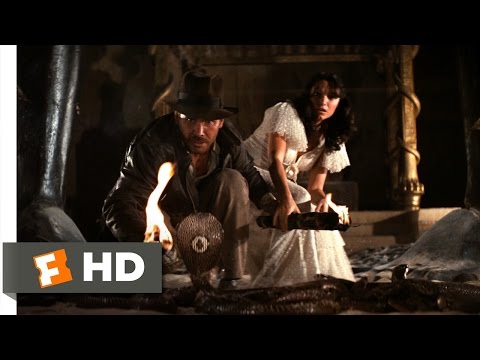
To appreciate how good “Raiders” is, one needs to observe how that extraordinary scene can be contrasted with an earlier sequence, one of the very few scenes here that isn’t iconic.
Look no further than when Jones, after teaching his class, is being interviewed and recruited for a mission. It’s an exposition-filled pitstop, in which four men verbally set up the plot in an empty lecture hall, using a chalk board to illustrate the power and importance of the Ark of the Covenant.
There’s no reason this part of the movie should be so compelling, but it pulls you in as much as every other moment here. It also has a bit of foreshadowing, as Jones notes the illustration of lines coming off of the Ark, stating it must be “Lightning…the power of God…or something.’”
Ford’s extraordinary physical performance deserves mentioning. Watch closely when he turns a corner, flinches at the explosion of a truck, then lets it register the sudden loss he experienced. Jones has the swagger, blind confidence and gloomy disposition of Humphrey Bogart in “The Treasure of Sierra Madre” and “The African Queen.”
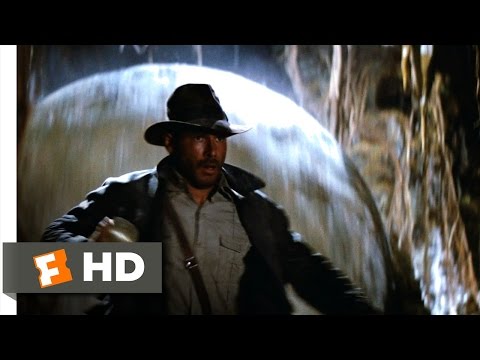
The adventure teems with ripe character turns, like Paul Freeman’s charismatically evil Belloq, Ronald Lacey’s Toht, a Peter Lorre-esque Nazi, Denholm Elliot’s wonderful work in the film’s first act, John Rhys Davies’ vibrant Sallah and Karen Allen’s feisty, layered performance as Marion Ravenwood. Allen more than fills the film’s need for a Lauren Bacall type to counter Ford.
The villains are so vile, there’s an even a Nazi sympathizer sidekick monkey (!).
Spielberg’s film isn’t a sprint from one wild action sequence to another but a well-developed, if deliriously pulpy, adventure tale. It helps immensely that “Raiders of the Lost Ark” sports a marvelous sense of humor.
FAST FACT: Alfred Molina made his screen debut in “Raiders,” his body covered in spiders for one pivotal sequence. Those spiders, all male, weren’t moving as Spielberg hoped at first. So the production team added one female spider to the mix, and the other remaining spiders suddenly hit their cues.
Lawrence Kasdan’s screenplay has the grace to make fun of itself but also add all these rich bits of character humor and sharp throwaways. There’s the famous shot of Jones head-to-head with an angry cobra, which Spielberg cuts to Sallah yelling from above, “I told you it’d be all right!”
Then there’s the weird, masochistic joke where the sadistic Nazi, Toht, removes what looks to be a brutal torture device, which is actually a wire hanger for his coat.
“Raiders of the Lost Ark” was the top grossing film of 1981, to no one’s surprise, and remains among the most popular and influential films ever made.
Few note there wasn’t a funnier movie released in 1981.
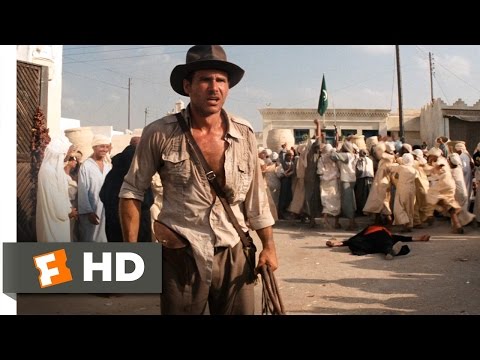
Jones himself is no angel, as many have noted in an uncomfortable, telling exchange of dialog that passes early, in which his relationship with Marion has an inappropriate origin. Later, when Jones has an opening where he can rescue Marion, he leaves her tied up, noting that to save her at the moment would give up the secrecy of his mission.
It’s consistent with the character — Jones is a hero, a brilliant thinker and a persistent survivor, but he can be a jerk. There’s also the matter of how he handles himself on each adventure…
I’m reminded of an old Cinefantastique review, in which a critic panned the film for celebrating an American who bulldozes his way through different countries, dismisses and/or uses the people there and steals artifacts from a culture that isn’t his. In short, the embodiment of American privilege and entitlement.
There is merit to that observation but here’s a more important element: despite many temptations thrown his way, Jones is never tempted or remotely impressed by the Nazi party. Jones is hardly a role model (seriously, just how good a teacher is he?), but he can’t be bought.
The three films that make up the 1981-1989 trilogy all have the same trajectory: in order for Jones to ultimately succeed, he must have faith in the object he is pursuing, as well as the religion it is connected to.
It’s a bold touch, as these three films portray a man of science and exploration having to have faith in order to fully grasp the truth and overcome evil. Kasdan’s screenplay has the tenacity to take the premise as far as it could go.
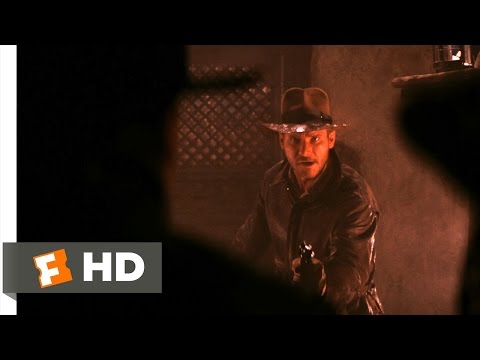
To discuss the film’s wild climax, here’s the story I’ve often shared with my film students.
In 1984, my father came home one night from work and handed me the videocassette of “Raiders of the Lost Ark,” which he just purchased for around $79.99 (remember, it was the ’80s).
“We’re watching this after dinner,” he said.
I was seven years old. He then showed me a bag from Toy R Us and pulled out a few “Raiders of the Lost Ark” action figures, which he handed to me. “These are from the movie we’ll be watching.”
He pointed to the box in my hand and said, “That’s Indiana Jones.” While Mom and Dad set the table, I opened the action figure box, looked over the Jones figure, put the little whip in his grip, pulled his arm back (as the box instructed) and watched him crack the whip.
Dad also brought me the Toht and German Mechanic action figures. Whatever “Raiders of the Lost Ark” was, I was already sold. Dinner was an excruciating wait to get downstairs, into the den, to watch the movie.
Once my Father hit the play button on his tank-like VCR and the Paramount Pictures logo faded into a real mountaintop, the movie put a smile on my face that lasted roughly 100 minutes, as it was every boyhood fantasy I ever had wrapped into a single film.
Then, we got to the end, where the Ark of the Covenant is opened and all sorts of terrifying things occur (things that should never happen in a PG-rated movie, Mr. Spielberg). My smile began to drain from my face and a look of panic took over.
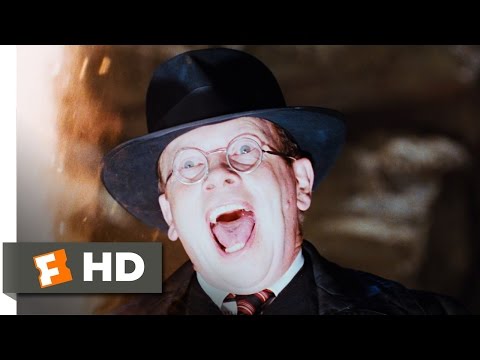
My mother caught this, put her arm around me and said, “Look at that, Barry. Isn’t that amazing? They made that man’s head melt the same way your Play-Do melts when you leave it in the sun? Isn’t that cool? Those are all special effects. There are people in Hollywood who make these things seem real. Isn’t that neat?”
I agreed that it was and went back to completely enjoying the movie, my tears all but vanished, the sting of fear from the onscreen gore now revealed to be an example of film craft.
Good save, Mom.
Not long after that, I got a subscription to Cinefantastique, then Starlog and Premiere. “Raiders of the Lost Ark” (and my mother’s way of calling attention to its value as a work of art created by film artists) led me into a love of film production and cinema history.
It made a lifelong fan out of me, for its mastery of the action movie genre and for being a perfectly crafted work of pure cinema. Now, 40 years after its initial release, there are still few visuals as exciting as Jones outrunning a boulder the size of a house, while John Williams’ career-best score and its legendary march enhances his every dash through sticky cobwebs, past the buzz of poisonous dart and through the doors that will never open again.
The actor playing Indiana Jones may have aged and endearingly at that (“It’s not the years, honey, but the mileage”) but “Raiders of the Lost Ark” hasn’t. It remains a milestone for Spielberg, Ford and American cinema. Summer movies haven’t been the same since.
The post ‘Raiders’ at 40: Indy Hasn’t Aged a Minute appeared first on Hollywood in Toto.
